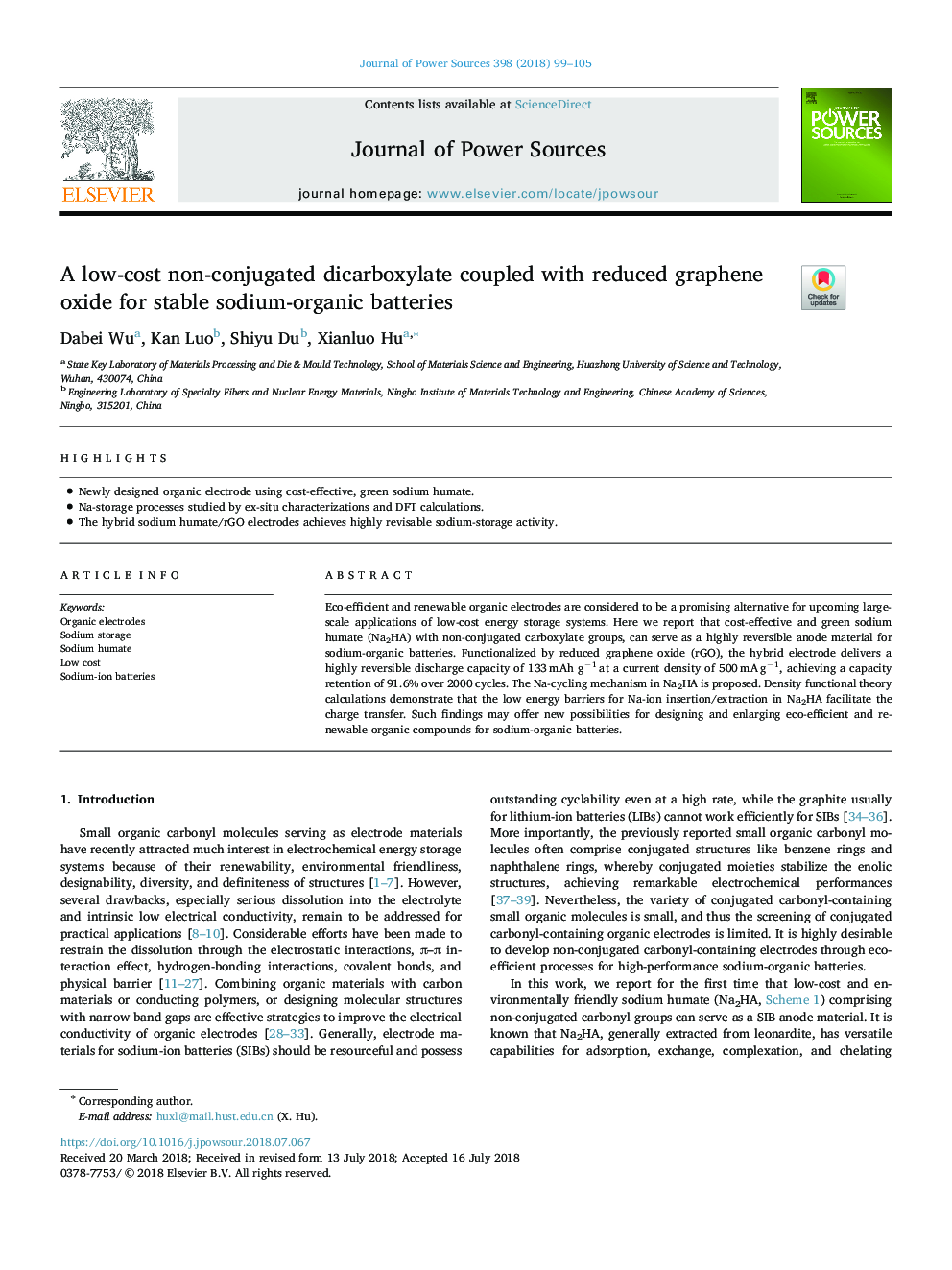| Article ID | Journal | Published Year | Pages | File Type |
|---|---|---|---|---|
| 7724681 | Journal of Power Sources | 2018 | 7 Pages |
Abstract
Eco-efficient and renewable organic electrodes are considered to be a promising alternative for upcoming large-scale applications of low-cost energy storage systems. Here we report that cost-effective and green sodium humate (Na2HA) with non-conjugated carboxylate groups, can serve as a highly reversible anode material for sodium-organic batteries. Functionalized by reduced graphene oxide (rGO), the hybrid electrode delivers a highly reversible discharge capacity of 133â¯mAh gâ1â¯at a current density of 500â¯mAâ¯gâ1, achieving a capacity retention of 91.6% over 2000 cycles. The Na-cycling mechanism in Na2HA is proposed. Density functional theory calculations demonstrate that the low energy barriers for Na-ion insertion/extraction in Na2HA facilitate the charge transfer. Such findings may offer new possibilities for designing and enlarging eco-efficient and renewable organic compounds for sodium-organic batteries.
Related Topics
Physical Sciences and Engineering
Chemistry
Electrochemistry
Authors
Dabei Wu, Kan Luo, Shiyu Du, Xianluo Hu,
